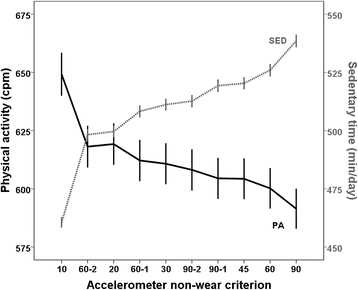
Many studies in digital health use accelerometers that are worn on the wrist to track activity of the person. This activity is measured through the day and then a score is computed for the person to express their score: activity to sedentary ratio.
In consumer world, this is expressed as some measure – say the number of steps that the person walked.
However, when used in clinical trials then it is important to measure the time that the subject was sedentary vs active. This is important when you are measuring activity and determining if the interventional treatment (drug or device) makes a difference to the subject’s activity score.
There are many ways to measure these statistics.
The physician designing the clinical trial defines the criteria in many ways:
a) measurement of defined activity in a specific time
b) In other cases, they measure the activity in a defined period – say 4 hours in the morning
c) Total activity per day
Depending on what criteria are chosen can have a considerable influence on the measurement of activity. It is important to define what that criteria will be since that will influence the results of the study.
Let’s take an example of non-wear time which is defined as the amount of time that the subject does not wear the accelerometer/watch. This could be because they are in a shower, swimming, forgot to wear it, or lay it by the bedside or left it on the table. When the biostatistician analyzes the data, he/she might choose to ignore this data – after all the counts are zero for long periods of time. If the statistician analyzed ALL the data then it might skew the results to inactivity. So, to make a pre-defined analysis, the statistician ignores any zero data for xx minutes. These minutes make the difference. If you ignore all of the non-moving data then you are artificially increasing the activity score but on the other hand if you ignore too less then you increase the sedentary data. This was analyzed in a paper: “A comparison of 10 accelerometer non-wear time criteria and logbooks in children” in BMC Public health. (18) 323 . 2018.
There is a direct correlation between the period of time that the statistician choses to ignore and activity and sedentary time. Note that this decision comes before any statistical significance is specified or before any significant differences among the groups are calculated. The graph can be seen on the journal’s website here and reproduced above.
This has been brought up before in another study in 2013 “Sedentary time in children: influence of accelerometer processing on health relations.” Medicine and Science in Sports and Exercise [01 Jun 2013, 45(6):1097-1104]
How is this resolved currently? Most clinical design teams usually make a judgement on the regions to include before the analysis and they base that on very little data or a very small phase 0. There is usually not enough published data in the population or the disease that is being studied so this is usually arbitrary but does have >10% effect on the efficacy of the drug. This is just one area to watch out when analyzing wearable data.
Please send us a note to tell us what you think or what strategies do you use in your analysis.